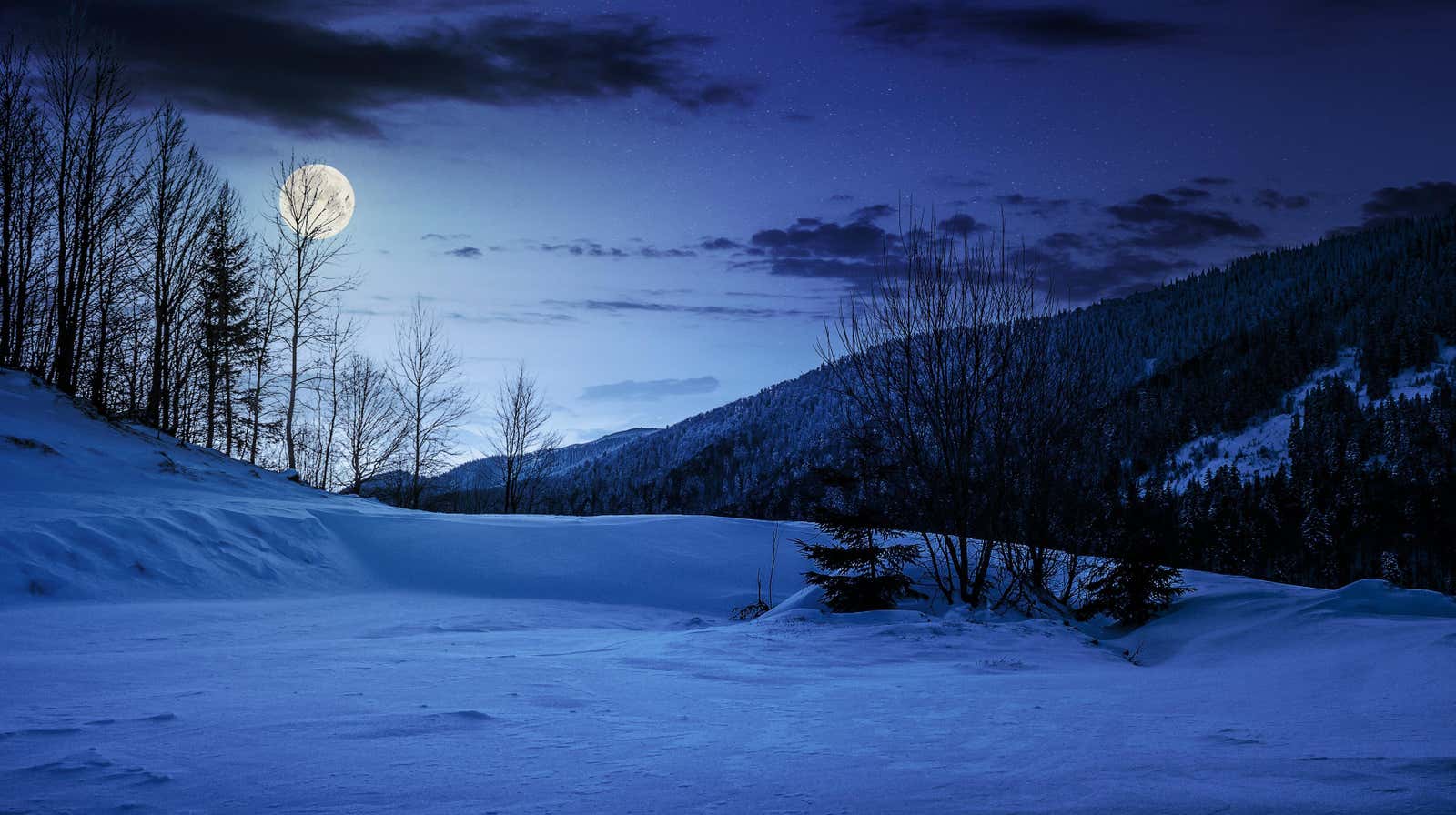When Can You See the Full Moon in February

There is something evocative about a full moon in winter. Combined with leafless trees and extreme cold, this harsh ball hanging in the frosty air can seem completely abandoned. Mark February 5th in your calendar of astronomical events of the year, and you will see for yourself how exactly then the “Snow Moon” will rise above the Earth to haunt us with its ghostly appearance. It will be at its brightest at 13:30, so you’ll have to wait until evening to see it rise above the eastern horizon. Or look at the almost full moon the night before if you feel ready to face the cold.
The February full moon is a micromoon.
Because the Moon is at the far end of its orbit at this time of the year, it will appear slightly smaller and less bright than average. The February moon is a “micromoon” but size doesn’t matter to most people. The smallest micromoon appears only 14% smaller and less luminous than the largest supermoon, and you are unlikely to notice this difference, especially if it is a clear cold night with snow on the ground.
Why is the February full moon called the “Snow Moon”?
Most of the popular full moon names are based on the names of the months in which the moons appear, indigenous peoples. The name “Snow Moon” was first mentioned in the 1760s by Captain Jonathan Carver.
Carver was the first to document much about the Plains people, including their name for the February full moon, in his book Travels in America 1766–1768. A few years before Lewis and Clark were born, Carver left his wife and children in Massachusetts to explore the then unknown regions west of the Great Lakes to Easterners and search for the elusive Northwest Passage. When his journey ended, Carver returned to England, married another woman, and died penniless despite his historically invaluable descriptions of pre-contact indigenous customs.
Other names for the February full moon
Snow Moon is actually not such a good name for the full moon in February, since January is actually the snowiest month in most of North America. I prefer variants from other indigenous groups who have dubbed the February moon “Hungry Moon”, “Bone Moon”, and “Little Hungry Moon”. A less grim name for the full moon in February is “Trappers’ Moon,” a nickname given to it by trappers because beavers, minks, and foxes are at their most furry during the coldest part of the year.
Random Lunar Fact: The moon is moving away from us
Every year the Moon moves away from the Earth by 1.49 inches, probably because you did something.